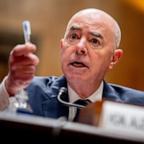4 key battleground states reporting record-high coronavirus cases weeks from Election Day
Michigan, Ohio, North Carolina and Wisconsin are all seeing surges.
Four key battleground states -- Michigan, Ohio, North Carolina and Wisconsin -- are seeing record-high novel coronavirus cases, sparking concerns the U.S. is headed in the wrong direction a little more than two weeks before Election Day.
"It is very possible that this is the beginning of a second wave," Michigan Chief Medical Executive Dr. Joneigh Khaldun said Tuesday at a meeting with state and public health officials.
The battle at the polls is quickly becoming a battle to keep voters safe as they turn out in pivotal contests.
Michigan
On Thursday, Michigan set a daily new record with 2,030 reported coronavirus cases, the highest daily number of COVID-19 cases reported in the state since the pandemic started. The seven-day average for new cases reached its highest point since early April.
The state also saw an 80% increase in hospitalizations from the 564 hospitalizations reported in September, with 1,017 hospitalized as of Thursday.
"Public health officials in Michigan are deeply concerned about the increasing numbers," said Adam London, health officer for the Kent County Health Department. "In recent weeks, we have seen significant increases in new cases, the test positivity rate and the number of people admitted for inpatient care at our local hospitals."
London told ABC News that if people socially distance, voting will not result in more coronavirus cases.
"I believe voting itself can be a low-risk activity if people wear facial coverings, maintain physical spacing and practice good hygiene," said London. "I am, however, worried about election watch parties."
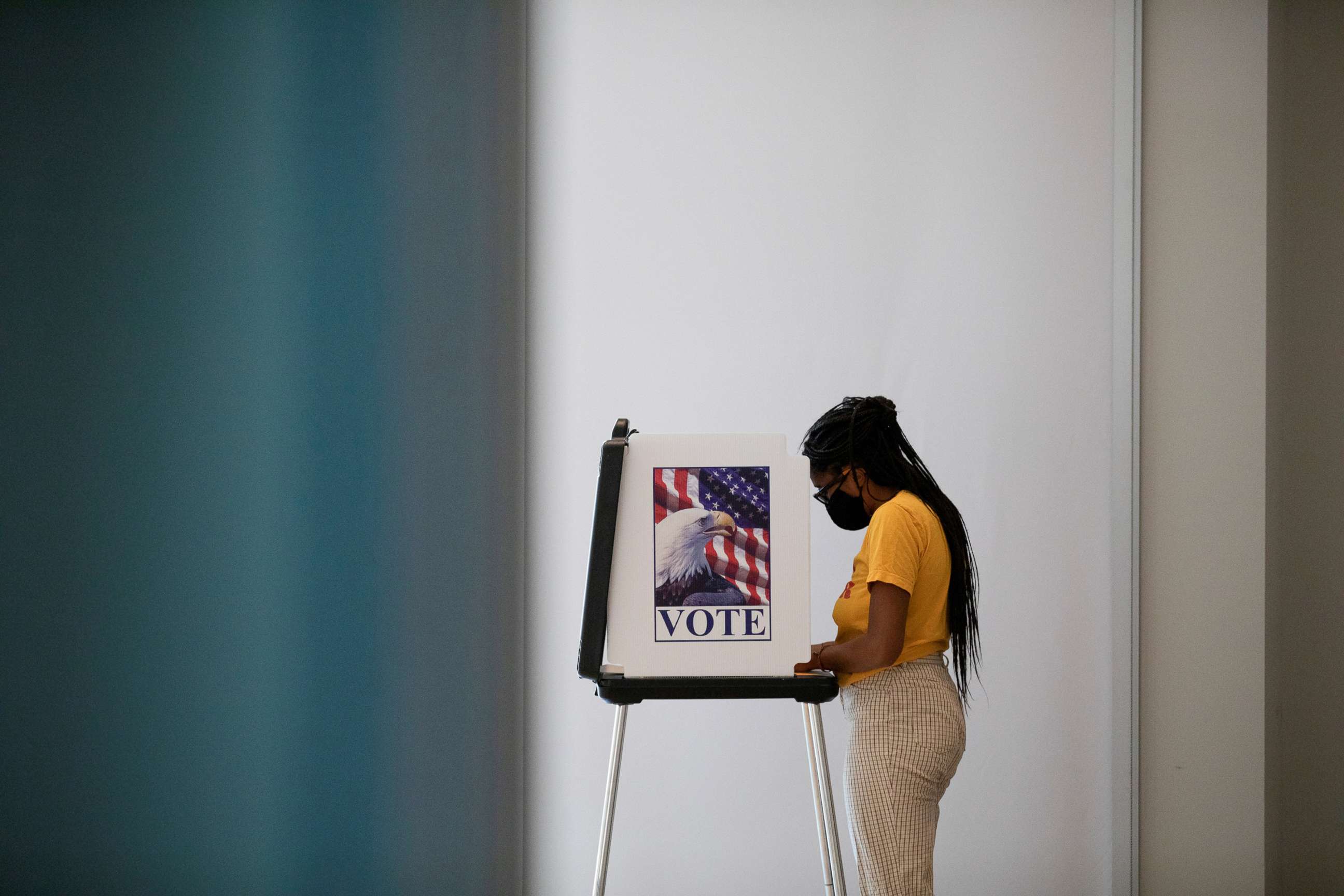
Last week, Michigan Department of Health and Human Services Director Robert Gordon issued an emergency order restricting gathering sizes, requiring face coverings in public spaces and imposing limits on certain business operations.
The order came after the Michigan Supreme Court struck down orders that Gov. Gretchen Whitmer had issued in late September.
"The rise can only be due to behaviors that are not consistent with public health advice," said Nigel Paneth, a professor of epidemiology at Michigan State University. "In Michigan, our rise has paralleled the return to college campuses and the increase in mask-free, non-distanced, social gatherings in bars, fraternities and the like. No doubt there is some fatigue with the restrictions as well."
"Of course, national leadership does not model good public health advice," added Paneth. "The effects of this are disastrous."
Ohio
In Ohio, health officials reported 4,217 new coronavirus cases in two days, with the state setting a record high for COVID-19 cases on Thursday, marking the third time the state hit a new high in less than a week.
"We've gone up dramatically in a relatively short amount of time," Gov. Mike DeWine said Thursday at a news conference.
DeWine added that the state's positivity has increased from 2.7% in September to 5.4% in October.
"As we see tests go up, we would expect to see more cases," added Dewine. "But what we then really have to look at is positivity. What we should be seeing is a decrease in positivity as the testing goes dramatically up. Instead of that, what we're seeing is not a decrease in positivity, we're seeing a very, very significant increase."
Garrett Guillozet, the health commissioner in Ross County Health District, is concerned the rise in coronavirus cases is spreading to Ohio's rural counties. Ross County, about an hour south of Columbus and two hours east of Cincinnati, is one of those places.
"I am absolutely concerned with the increased cases of COVID-19 across Ohio and within our community," Guillozet told ABC News. "We are seeing spread in both congregate and non-congregate settings. I think we are at a point where people are suffering from COVID-19 fatigue. However, now is the time to reinforce the precautions that we know work to reduce the spread of COVID-19 within our communities."
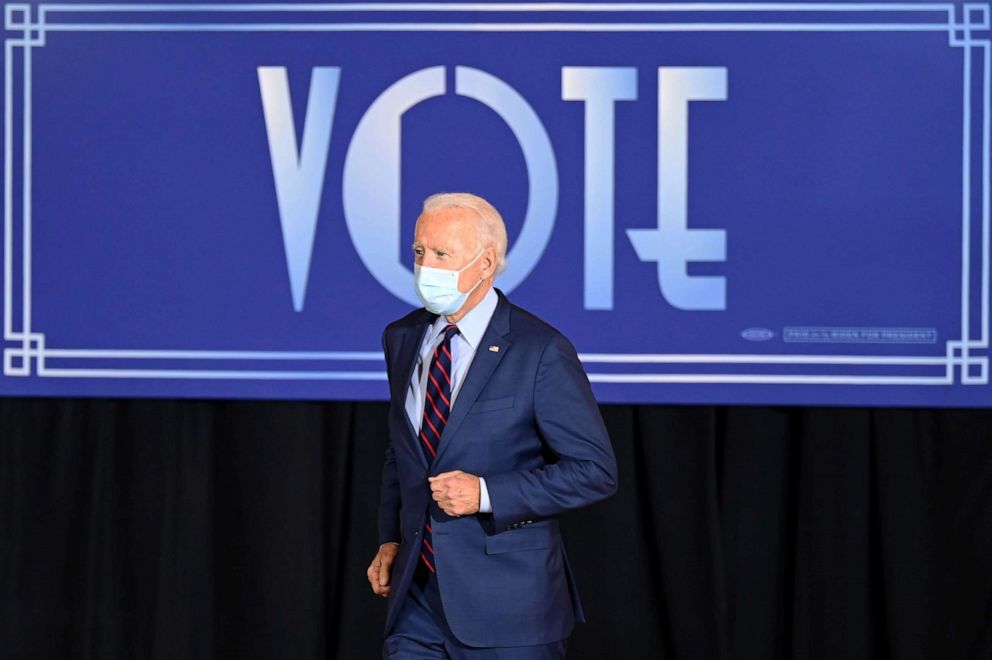
"I am concerned about the rise in cases and I think it's similar to what we saw in July with COVID fatigue," said Dr. David Margolius, division director of internal medicine at MetroHealth Medical Center in Cleveland. "Folks want to reclaim their pre-COVID life. They start to get a little less stringent about wearing their masks and they start to spend more time with friends and family that they've been isolating from."
Ahead of Election Day, counties throughout the state have added strict measures to keep voters safe. In September, Ohio Secretary of State Frank LaRose sent a 48-point voting safety plan to the battleground state's 88 county boards of elections.
The plan includes routine cleaning of voting machines and e-pollbooks, making curbside voting available and implementing mask requirements and regular hand-washing for all poll workers.
"Voting is different during a pandemic and voters are going to need to take steps to protect themselves," said Catherine Turcer, the executive director for Common Cause Ohio, an organization dedicated to protecting and improving voters' rights and access to the ballot. "While the increased number of cases makes everyone nervous, we have some basic tools like masks and all Ohio voters who choose to vote in person are encouraged to wear a mask. The poll workers will have masks and PPE for voters who need them."
North Carolina
The North Carolina Department of Health and Human Services reported Friday the state's highest one-day increase of COVID-19 cases to date with 2,684. The department also reported the second-highest number of hospitalizations in the past 30 days, with 1,148.
"I know we're all tired of this. It's frustrating to feel confined and to do the things we need to do to slow the spread of the virus," said Gov. Roy Cooper on Thursday. "We cannot let weariness and frustration win out. Wearing masks and being careful are more important than ever."
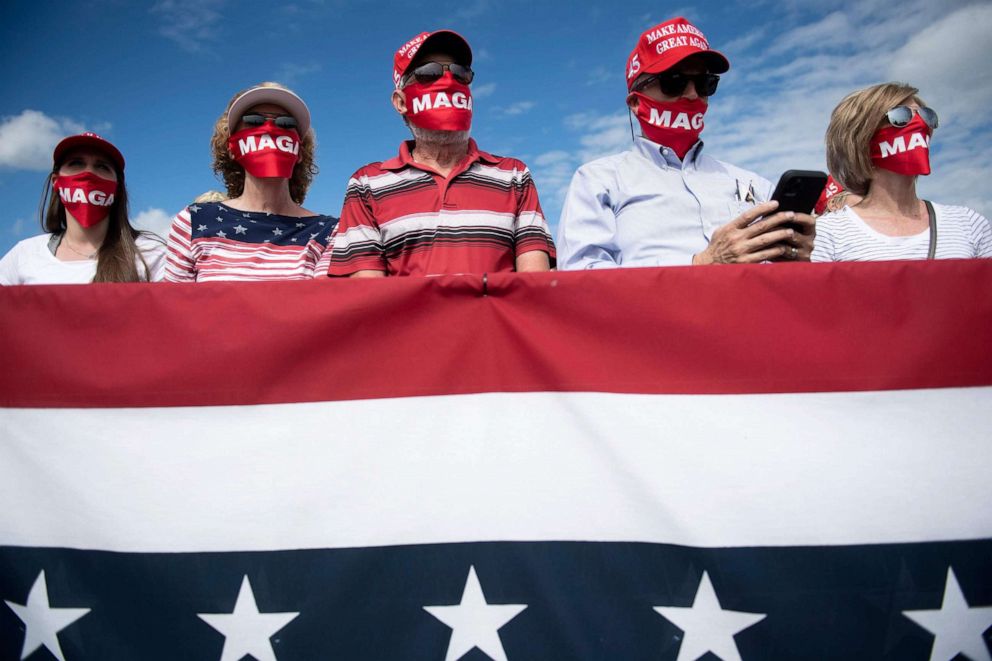
Earlier this month, the state board of elections announced it will provide options for those who want to safely vote in person without entering a potentially crowded polling place or standing in long lines.
Every voting site in North Carolina will offer curbside voting for those unable to enter a polling place due to age or disability.
Wisconsin
In Wisconsin, 3,700 new coronavirus cases were reported on Thursday, shattering a daily record set just two days prior by nearly 500 cases. The increase in cases brought the state's seven-day average to nearly 2,928 cases per day.
At a press conference on Thursday, Wisconsin Gov. Tony Evers said that Wisconsinites need to heed warnings to help slow the spread of the virus.
"We can prevent deaths. I don't know how anyone in the state of Wisconsin can feel comfortable about saying, 'What the hell, I don't care about preventing deaths,'" said Evers. "We will continue to be messengers ... to reach out to the 30% of the people that don't believe in this and we'll continue to fight."
Evers said he plans to activate the Wisconsin National Guard to fill any staffing shortages at election sites.
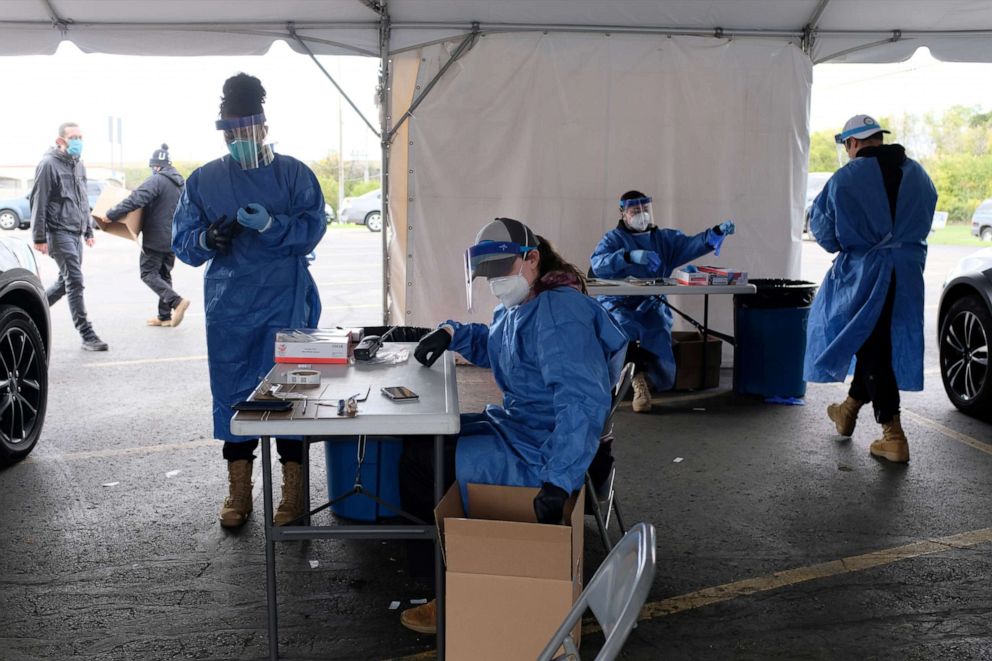
Darren Rausch, health director at Greenfield, Wisconsin, Health Department, is concerned that voting and other gatherings in the community will result in more COVID-19 cases, but is hopeful that since the state has promoted absentee voting and early voting, there will be fewer people gathering at the polls.
Ajay K. Sethi, an associate professor in population health sciences at the University of Wisconsin, told ABC News that the state has put in place strict restrictions to make sure voters are safe.
"Since previous COVID cases were tied to polling locations during the April spring election, there certainly is awareness and concern for additional spread of the virus on Election Day," said Sethi. "Election officials are preparing to operate polling places safely, and a record number of Wisconsinites have voted already, so I am hopeful that Election Day will not add more fuel to the fire."




